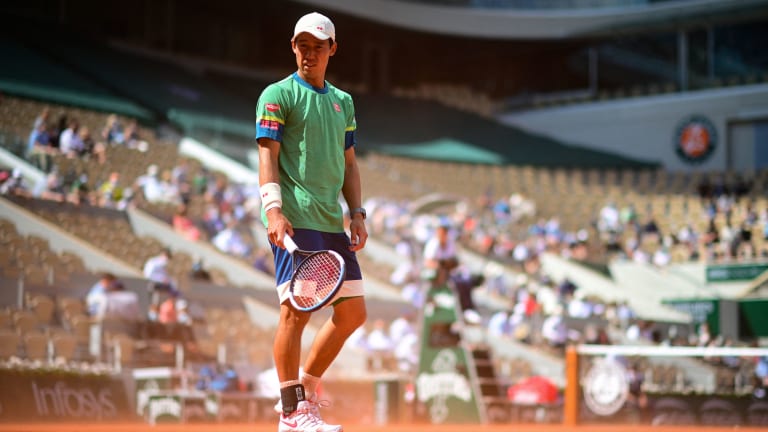In the morning the breeze was gentle, just enough to blunt the heat of a hot summer day. But three hours later, as the two men entered Court 3 at their local club, the wind had picked up considerably—not quite gale force, but enough for the flag to twist and snap against the pole in various directions.
“Oh no,” said player A, “these are just terrible conditions. We’ll never get a rhythm.” Player B said nothing.
The silent man was me. You see, I love competing in the wind. Why? Because you don’t. Because you hold the belief that you are entitled to rhythm and flow. Because you like to think that the ball should go where you aim it. Because you believe that life is hard enough and your sacred tennis party should not be crashed by this chaotic jester who pokes fun at your desire to get warm, work up a sweat and exit the court feeling good about those many smooth shots you love to hit.
I hold all those beliefs too. Few moments in life are better than a warm day, two crosscourt groundstrokes, an approach shot and a clipped volley winner. Wind blows all that off the table. Points will be earned, but rarely with particularly scintillating placements that close out crisp exchanges.
As a teenager, I competed often in Santa Monica, a Southern California town just off the Pacific Ocean. The wind cropped up frequently. It was easy to disparage the wind, to cite its presence as an excuse for poor play, as much a hindrance as a tweaked calf, stress from schoolwork or vexing family matters. “The wind is an equalizer,” the phrase went. But that didn’t make sense to me. Since the wind was concurrently affecting both players, wouldn’t each theoretically be hindered by the same degree?
That’s when I began to see how competing in the wind was a function of the power of the mind. The wind is not an equalizer. It’s an intruder, a third party raising major questions: Who is willing to acknowledge that tennis in the wind is less a matter of perceived beauty—as if that should matter in any form of non-judged athletic competition—and more about simply being effective? In other words, who is most willing to shed vanity and clearly stare face-to-face with reality?
